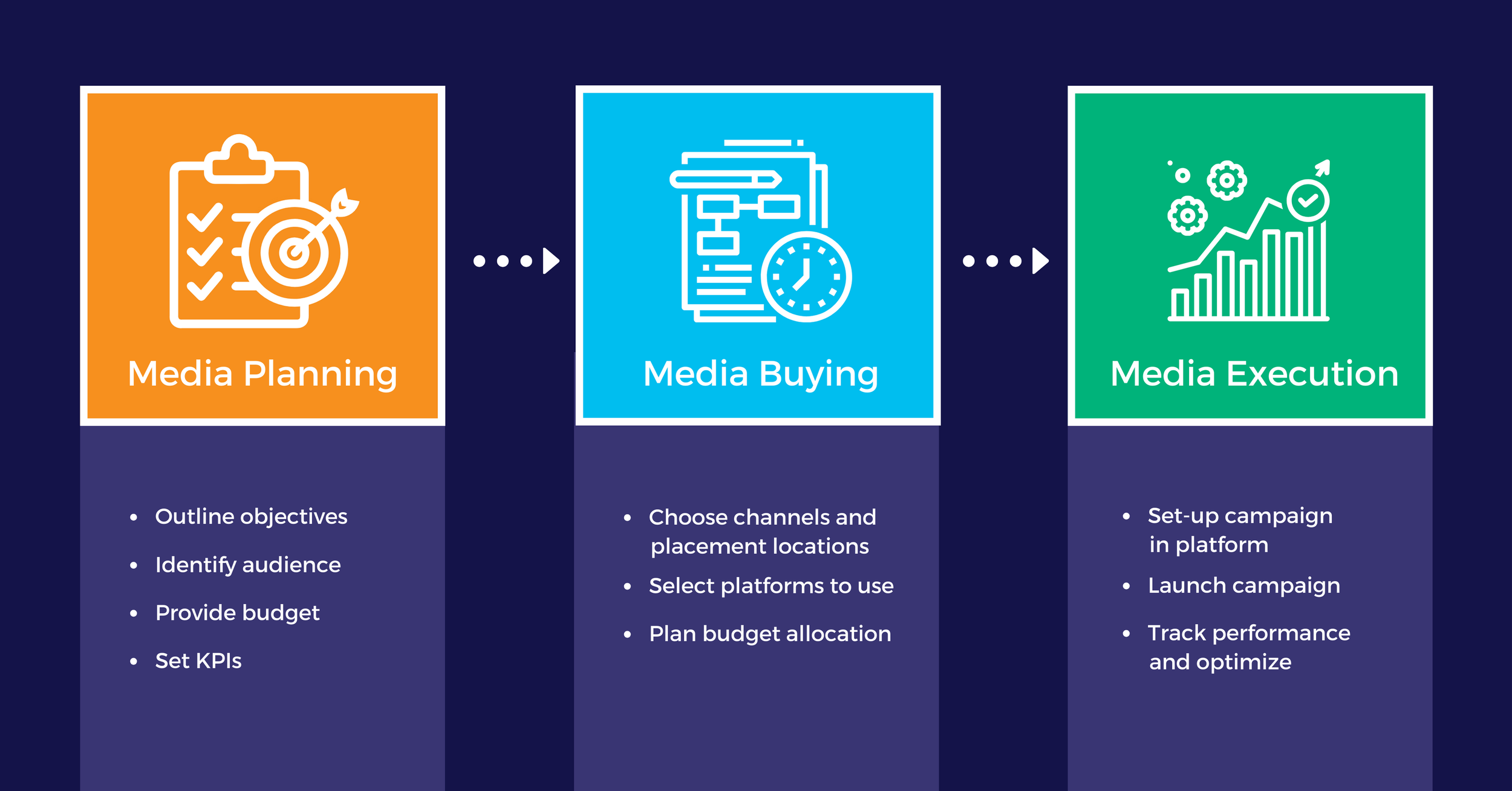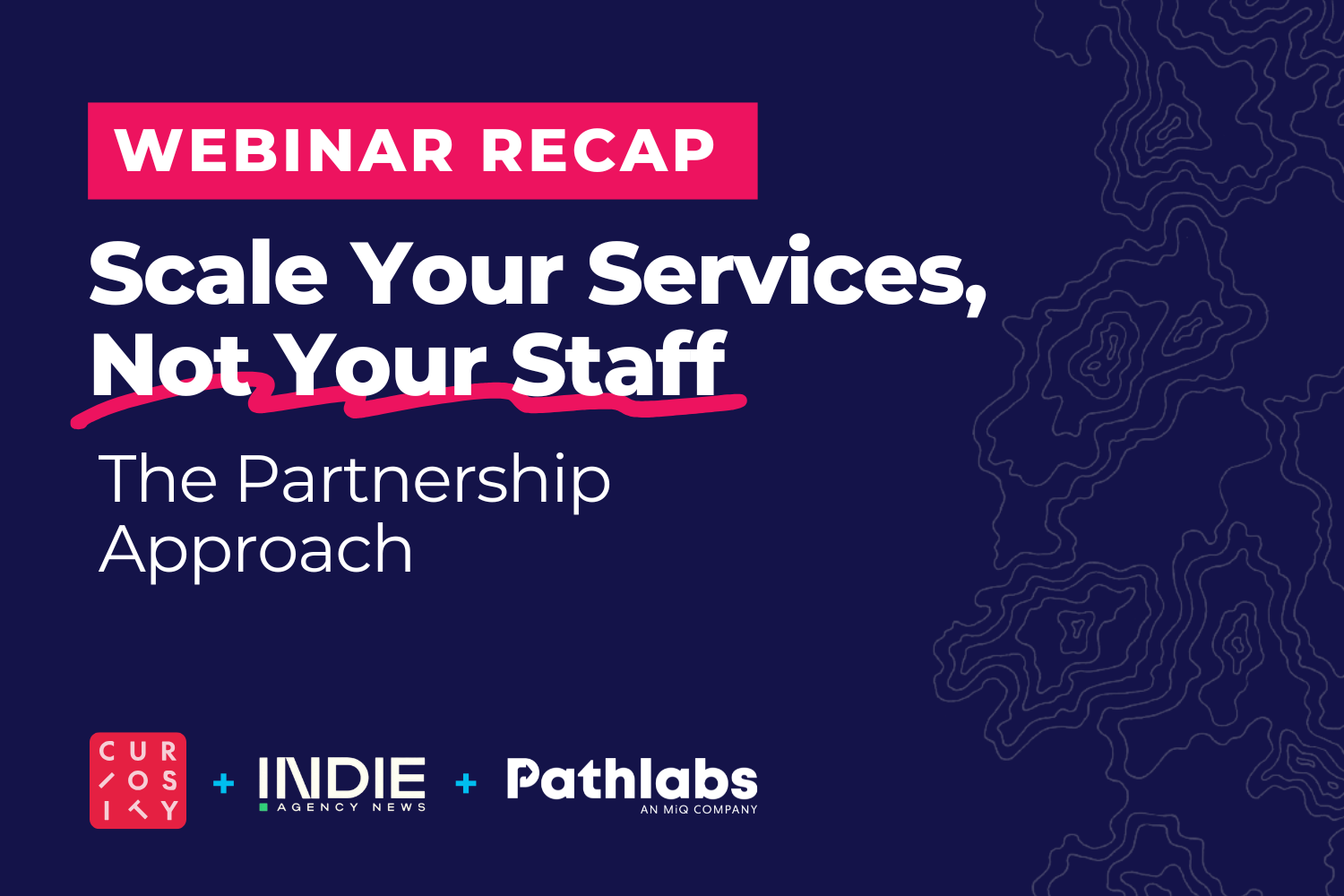Digital Media Buying: Strategies & Best Practices for Success
| Pathlabs Marketing |
| September 13th, 2023 |
Media buying is a key function in advertising and campaign execution. However, it means different things to different people.
In this blog, we discuss digital media buying coming from our perspective at Pathlabs, serving as a media execution partner for agencies.
We cover what digital media buying is and touch on strategies and best practices to make these efforts optimal.
What Is Digital Media Buying?
Digital media buying encompasses the research, strategic development, and negotiations involved in securing online ad space.
It is hard to develop a perfect definition of media buying, as it is ever-evolving.
Traditionally, media buying has been the procurement and purchase of advertising space. Advertising teams had a media buyer who scouted ideal ad spaces and manually negotiated with publishers for placements. The media buyer also had a hand in the campaign execution, ensuring ads appear at the right place and time.
However, with the advent of media buying platforms and advertising technology, teams can now execute campaigns and technically buy ad space concurrently.
This decreases the need to have media buyers manually secure ad placements. Therefore, the concept of media buying and the role of the media buyer has become more strategy-based.
Now, digital media buying is the intermediate step between digital media planning and execution when running advertising campaigns. Media planners craft a comprehensive media plan that outlines campaign objectives, target audiences, and overall budget.
Then, the media buyer works to refine this plan. They select buying platforms to use, identify specific channels and ad space locations to target, and detail how to allocate funds for budget maximization.
Please note that it is common for teams to have the same person handle the media planning and buying.
They finally pass this strategy to the media execution team responsible for deploying the campaign on the tactical level: setting the campaign up within designated platforms, launching it, and continuously optimizing its performance.
“In this new form of media buying, the digital media buyer spends less time negotiating with ad space owners to secure placements. Instead, they prioritize strategic guidance, serving as an intermediary between media planning and execution stages.
This is especially prevalent within agencies, where the digital media buyer helps translate their clients’ media needs into strategy and then collaborates with external vendors or internal teams who do the actual execution.
For Media Execution Partners like Pathlabs, account managers take on roles similar to digital media buyers. They translate agency partner media plans into actionable strategies and then delegate them to service teams for precise campaign execution.”
Types of Digital Media Buying Platforms
Digital media buyers typically select the buying platforms and ad technology that the media execution team will utilize to carry out the campaign and actually buy ad space.
These platforms can include Google Ads, Meta Advertising, Spotify Advertising, YouTube Ads, and Microsoft Advertising, among others.
Additionally, media teams can opt for programmatic platforms like The Trade Desk, Amazon DSP, and DV 360, enabling real-time ad buying and the use of complex data strategies.
With these platforms, teams can deploy ads in the following formats:
Social Media (Instagram, Facebook, Twitter, Snapchat, LinkedIn, Pinterest, etc.)
Key Aspects of a Solid Digital Media Buying Strategy
When constructing a digital media buying strategy, the media buyer must have the campaign objectives and target audience at the forefront of their mind.
It's crucial to zero in on the media plan, understand how it defines performance and success, and which key performance indicators (KPIs) reflect these goals. The media plan should also encompass the target audience, backed by thorough research and verified data.
A firm grasp of the objectives and audience enables the media buyer to make informed choices regarding the appropriate channel, platforms, and budget allocation strategy for the campaign.
“The primary goal here is not merely to choose the cheapest or most expensive channels and options. Instead, the focus should be on understanding the purpose of each channel within the marketing funnel and selecting the one that’s optimal for driving specific user action, such as generating awareness or pushing conversions. ”
They should also allocate the budget so it drives performance without overspending, thus maximizing funds. Achieving this balance necessitates continuous monitoring and campaign tracking, allowing for budget adjustments to ensure optimal results.
Best Practices for Buying Digital Media
Understand Intermediary Role
Media buyers should fully understand their role as an intermediary between media planners and execution teams.
They should enhance their expertise in both realms, enabling them to translate media plans into tangible strategies for execution.
“On the media execution side, executing within specified parameters can be challenging, especially if they are unrealistic. With the right expertise, media buyers can collaborate closely with media planners to develop practical plans and strategies that the execution team can feasibly implement.
Along these lines, media buyers should avoid overwhelming execution teams by trying to integrate too many channels. It’s better to focus on a few high-performing channels rather than spreading efforts thin across many.”
Conduct Competitive Research
Media buyers benefit from staying aware of competitors and their approaches to media planning, buying, and execution. This awareness helps identify optimal technologies, strategies, and ad placements for investment.
A/B Test Creatives
Media buyers should actively encourage their execution teams to conduct A/B testing in their campaigns. This testing can encompass elements such as ad copy, targeting parameters, and creative content to help better understand what strategies yield the best results.
Understand Conversion Tracking
Media buyers should collaborate closely with planners and execution teams to define campaign objectives within the sales funnel and pinpoint the touchpoints that warrant tracking for performance evaluation.
Monitor and Analyze Campaign Performance
To bolster future campaign performance and make well-informed media buying decisions, media buyers should sustain a level of vigilance over the data generated by active campaigns. This vigilance can take the form of routine reports or direct monitoring.
Overcoming Digital Buying Challenges with Pathlabs
For agencies going about their media buying and execution efforts, they may recognize they are performing well but want to level up, becoming more efficient and effective.
Whether the solution to do so be additional capacity, developed processes, or better tech options, they can find this by partnering with a Media Execution Partner (MEP), like Pathlabs. MEPs combine features of in-house teams and outsourced services, providing agencies with the people, workflows, and technologies they need to execute media successfully.
They will assess agency partners' media plans and help perform both the media buying and execution. This frees up time for the agency, allowing leaders to get back to strategic planning and scaling their company.
Emerging Trends and Technologies in Digital Media Buying
Advertising Technology
Advertising and media buying technologies empower media execution teams to create and run digital campaigns. They input their campaign details and the media buyer's strategy. Then, the algorithms and programmatic technology execute the campaign independently, often utilizing user behavioral, location, and demographic data to ensure highly relevant ad placements.
Programmatic technology, in particular, excels in speed and reach, enabling real-time ad placements while navigating through multiple ad exchanges.
As this technology continues to develop and become more complex, media buyers must maintain their knowledge of how they work and how to best incorporate them into their strategies.
Data Privacy and Cookieless Advertising
While analyzing user data for targeting is a benefit of advertising technology, the depreciation of third-party cookies has limited the amount of interpretable data available. Consequently, media buyers now find themselves collaborating closely with execution teams to navigate alternative avenues for targeting and tracking.
These alternatives include contextual advertising and leveraging first-party or user consent data. This process aims to harness the full potential of available data while respecting individual user privacy preferences.
New Channels and Ad Spaces
The emergence of novel digital media channels, including OTT, audio and video platforms, and immersive formats like VR and AR, introduces an additional dimension of intricacy for media buyers and execution teams.
Media buyers must understand these new formats' compatibility with campaign goals and devise pricing strategies that yield optimal results. Conversely, execution teams have to confront the complexities of overseeing and fine-tuning campaigns across these diverse channels.
In Conclusion…
Digital media buying has experienced a profound transformation, elevating the role of the media buyer into a strategic one. Media buyers now play a pivotal role in refining media plans, devising budget allocations, and honing ad space targeting strategies. Acting as a vital link between media planners and execution teams, this approach is particularly prevalent in agencies and media partners, where the intricate nature of digital campaigns demands an added layer of strategic insight.












